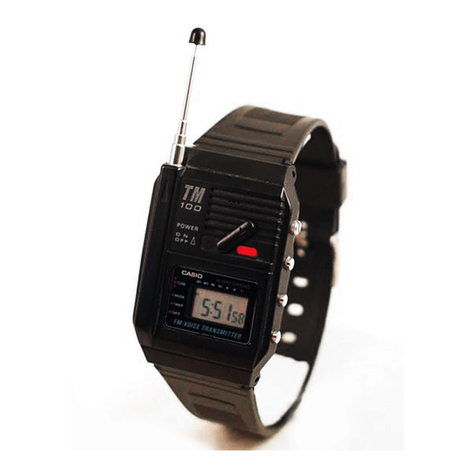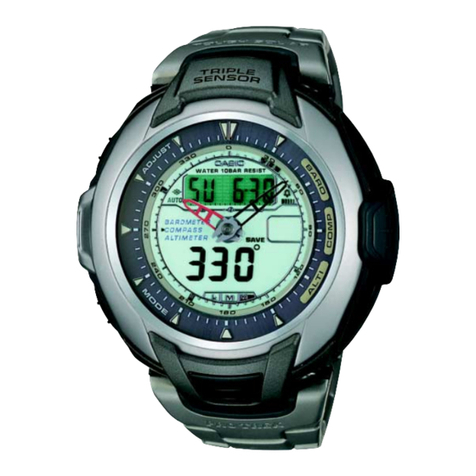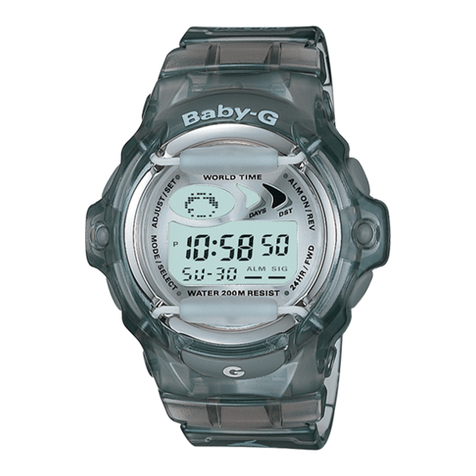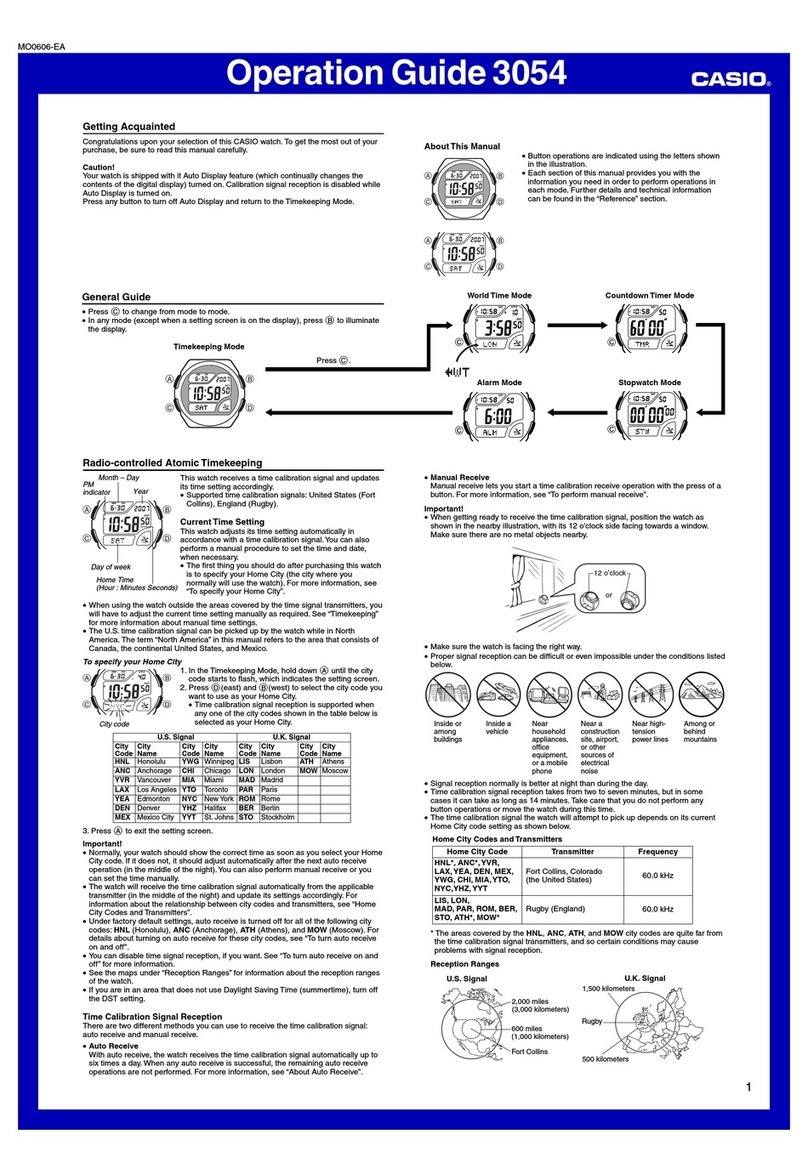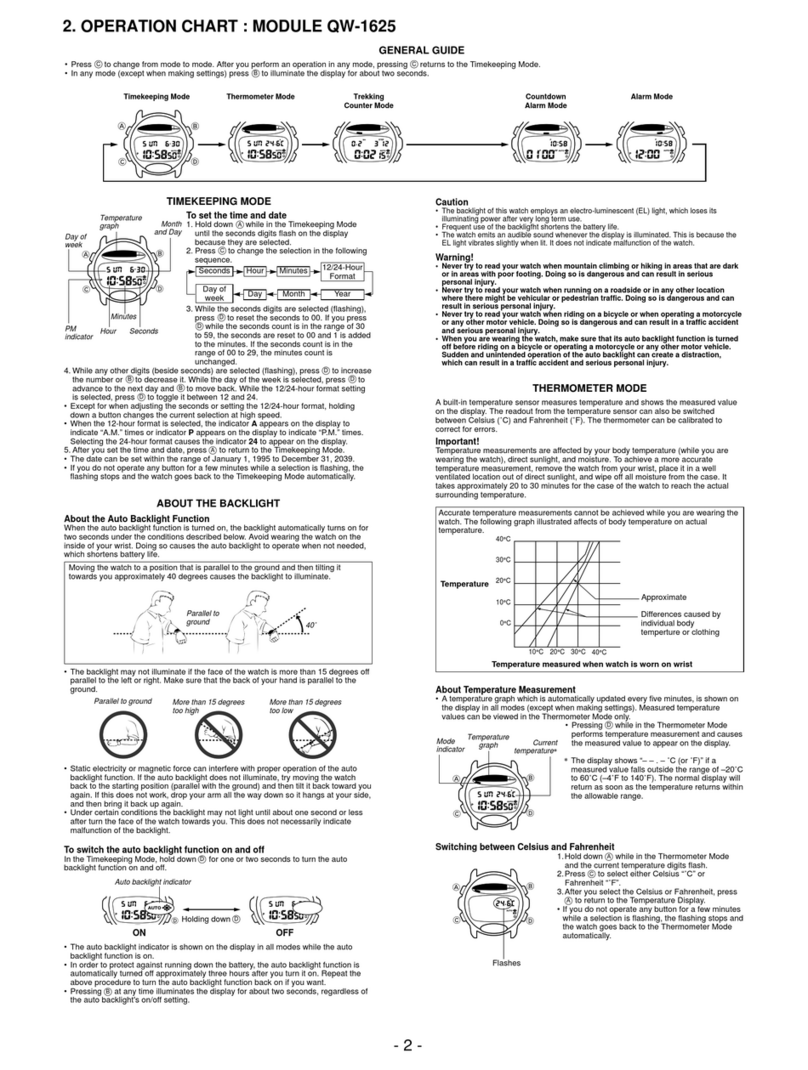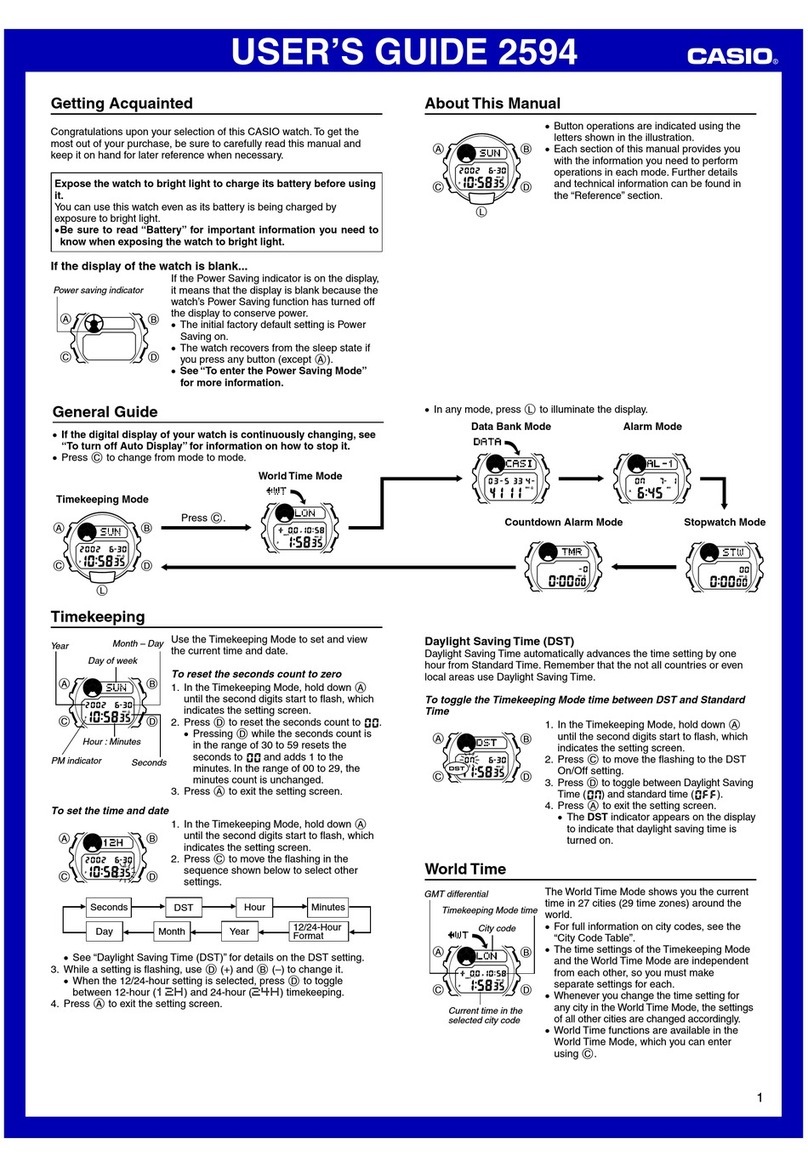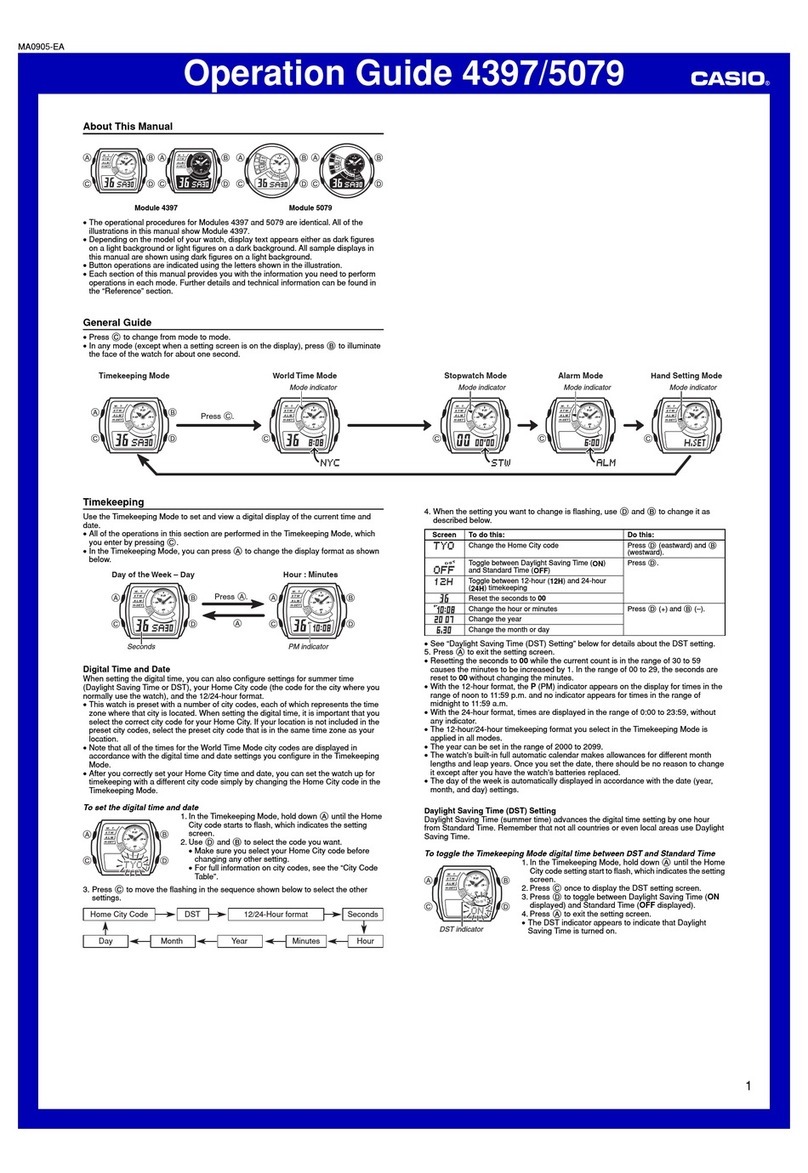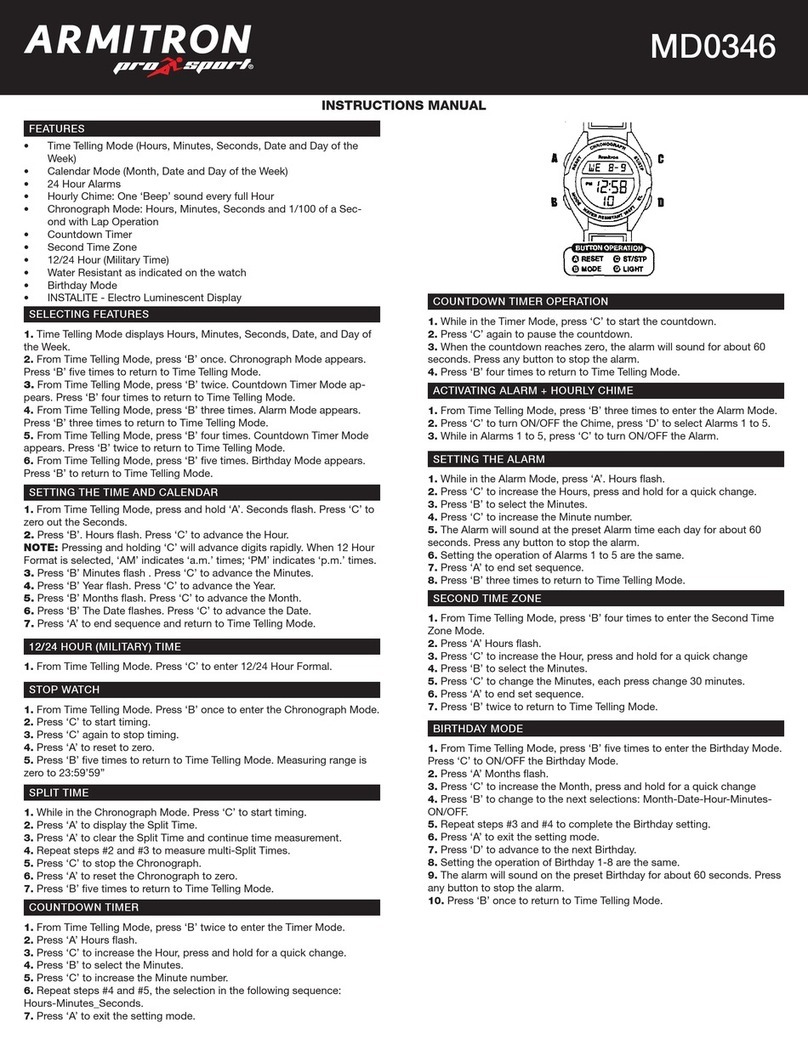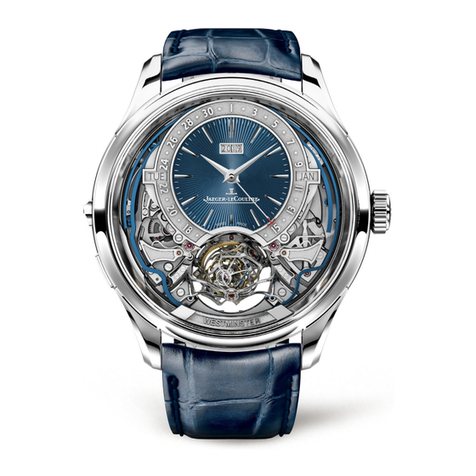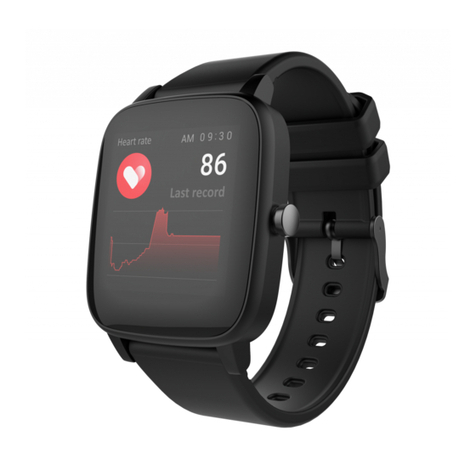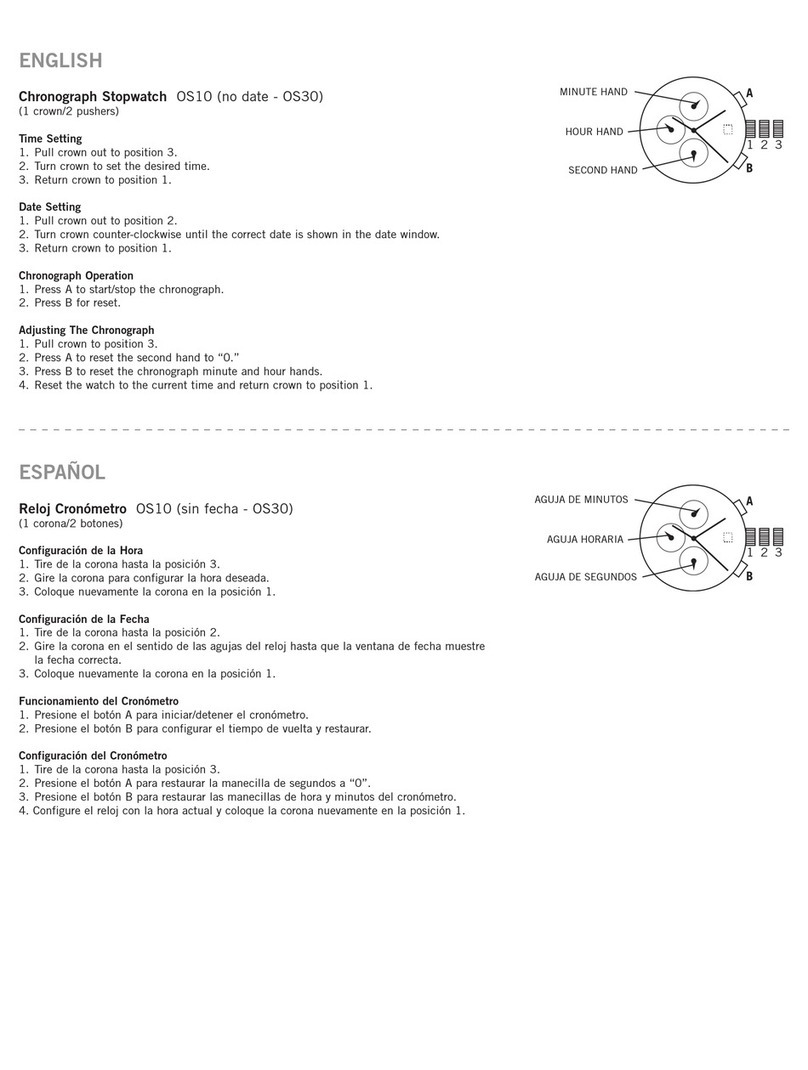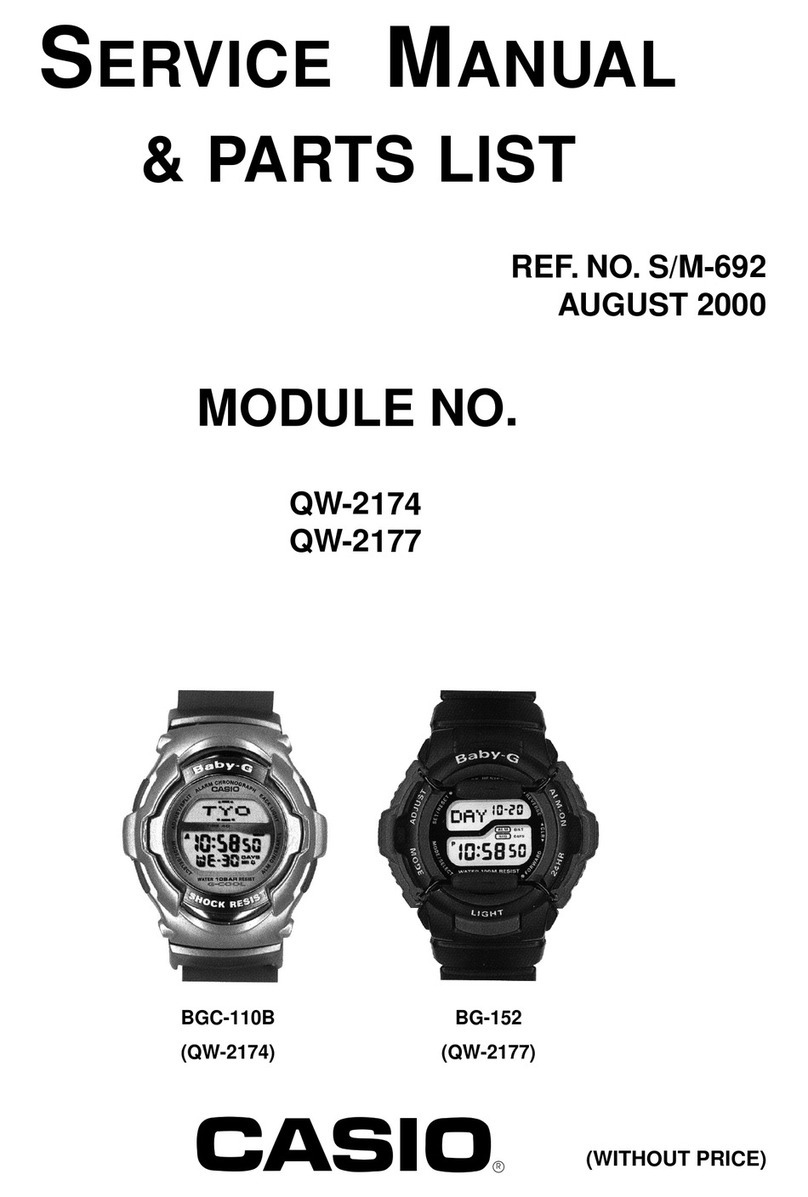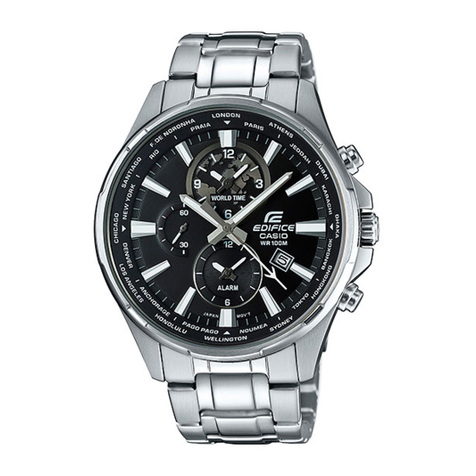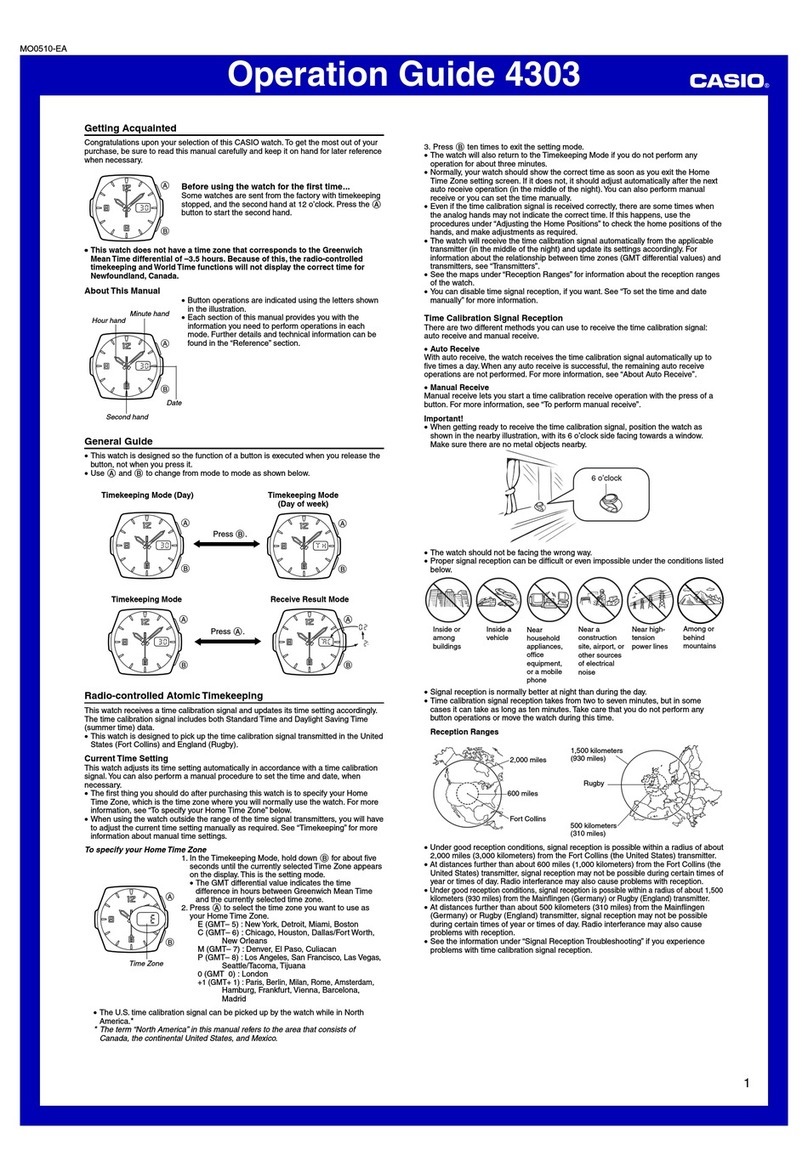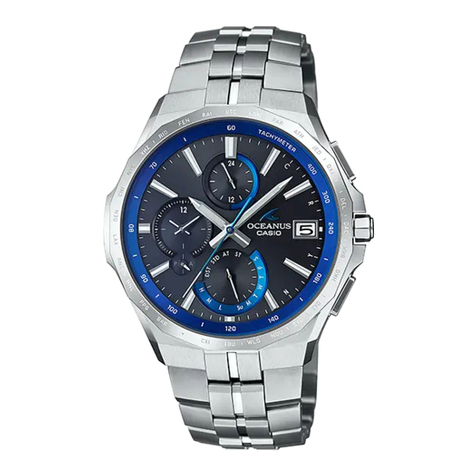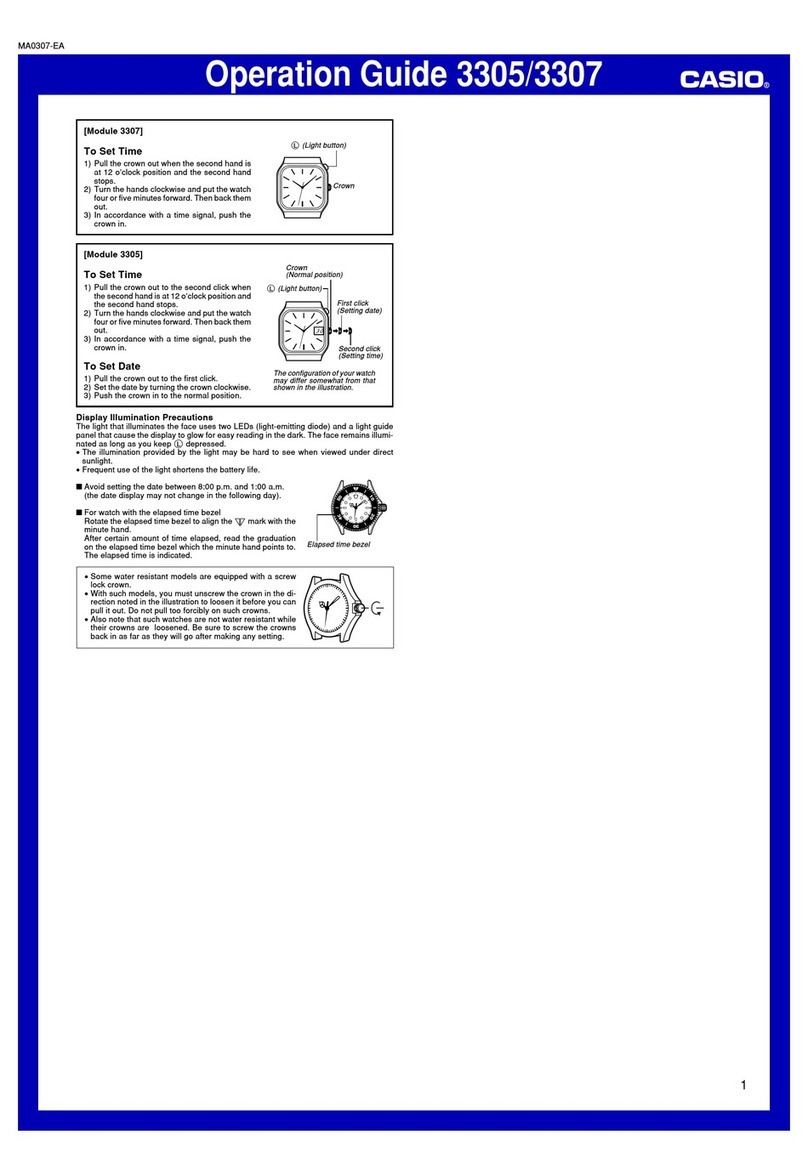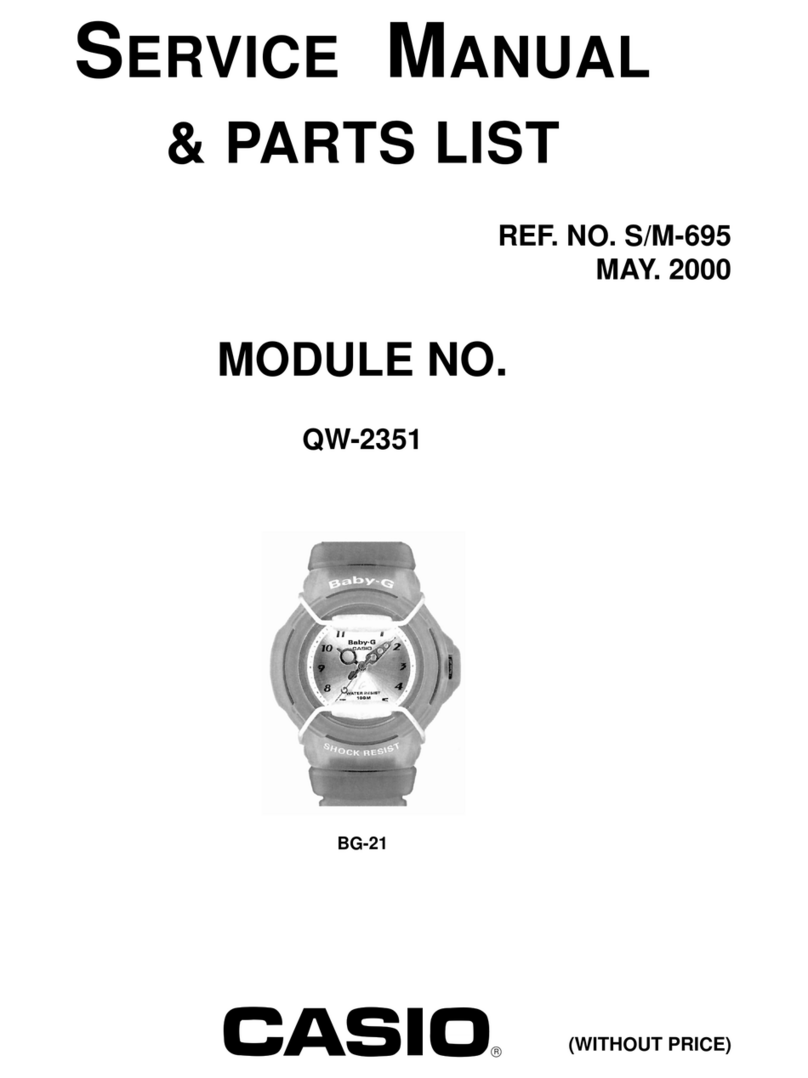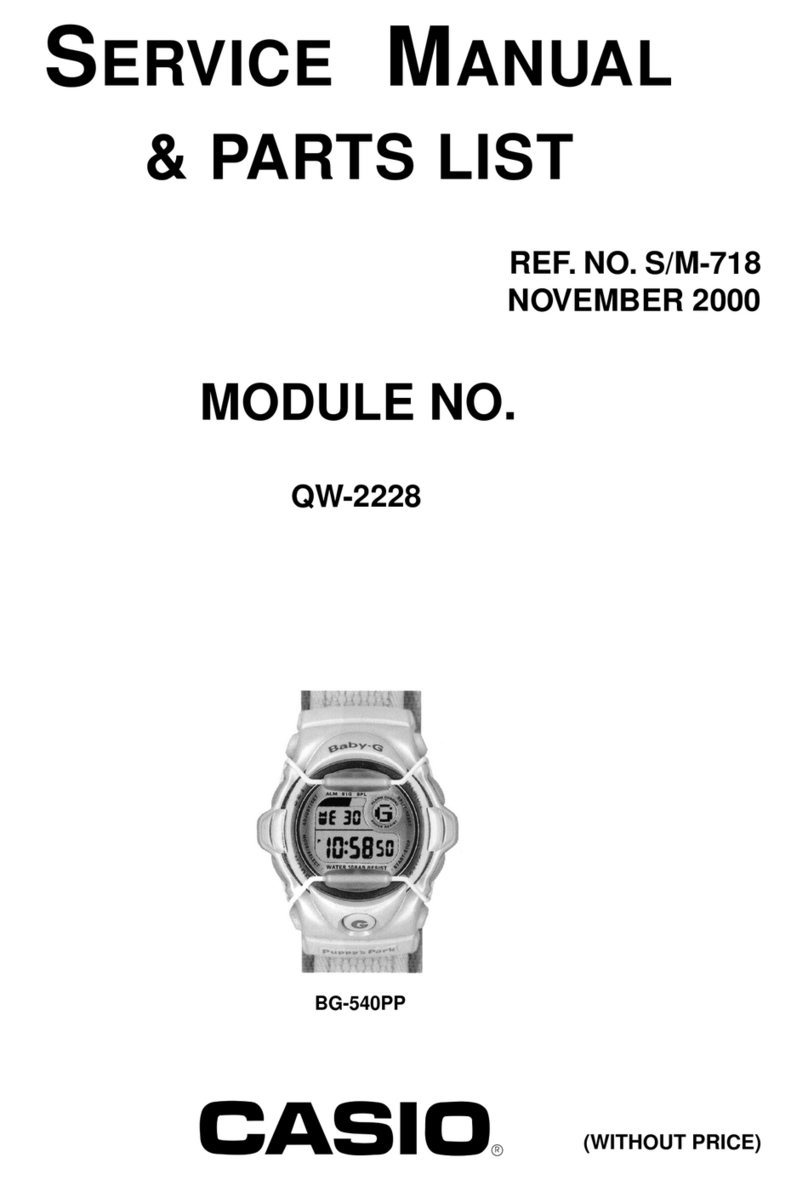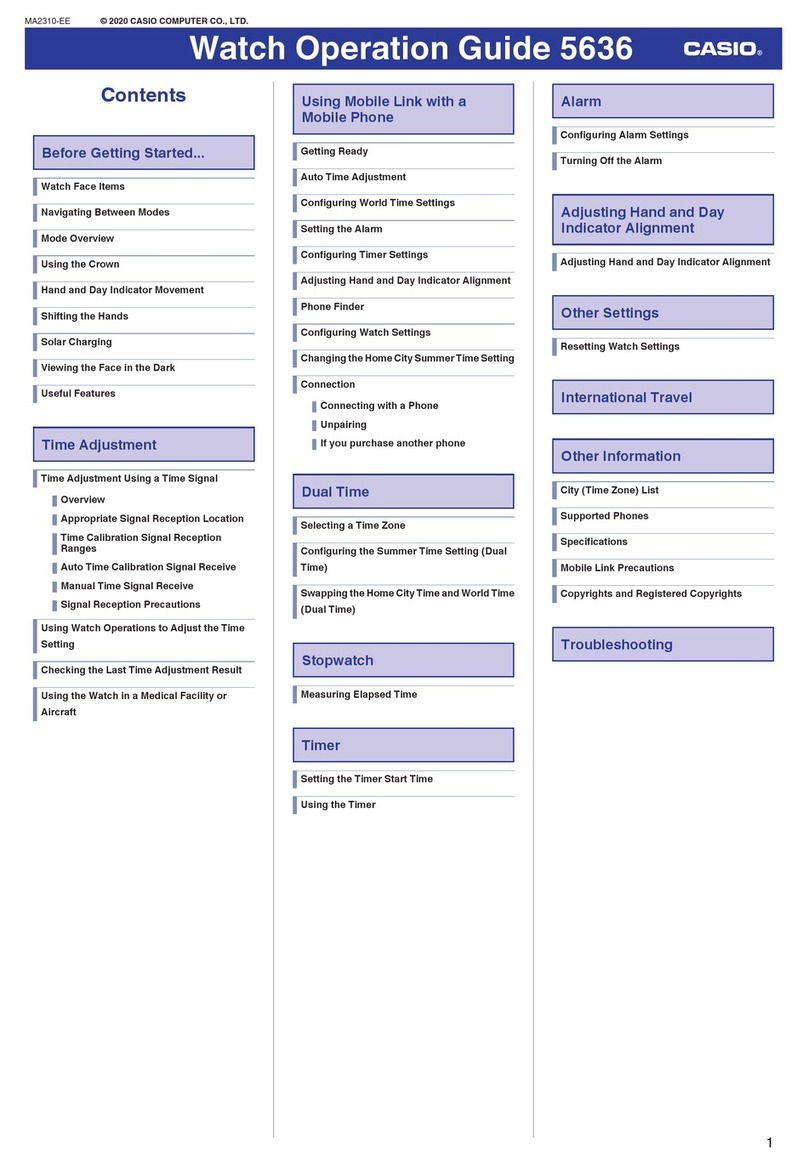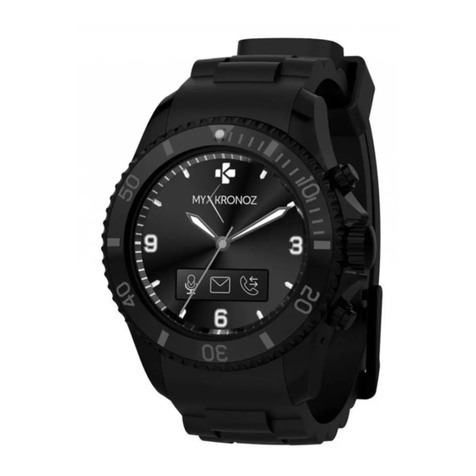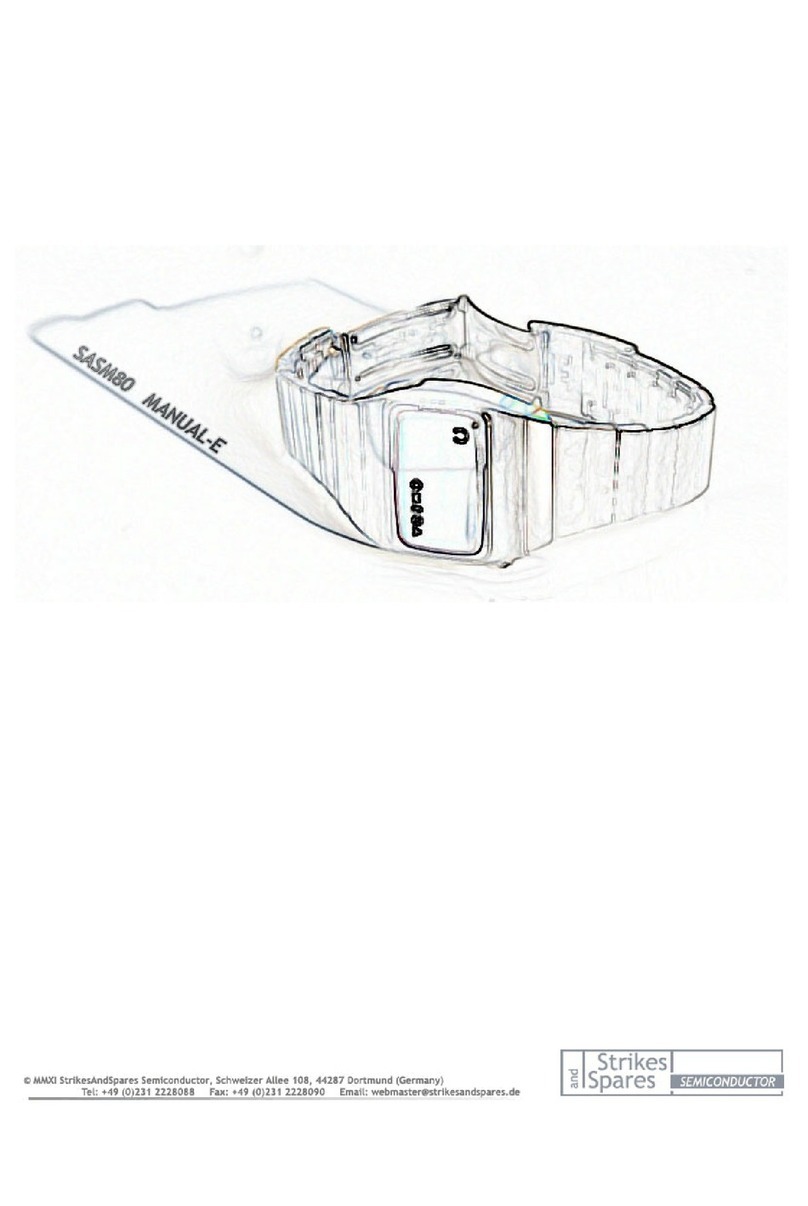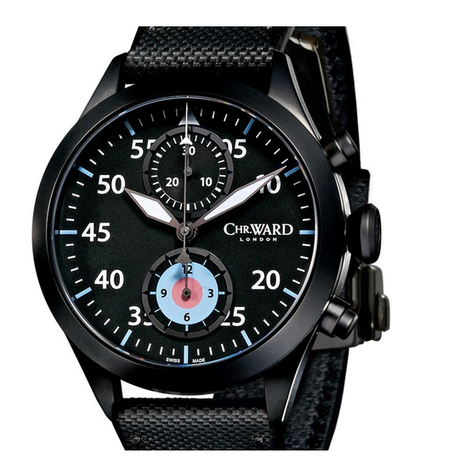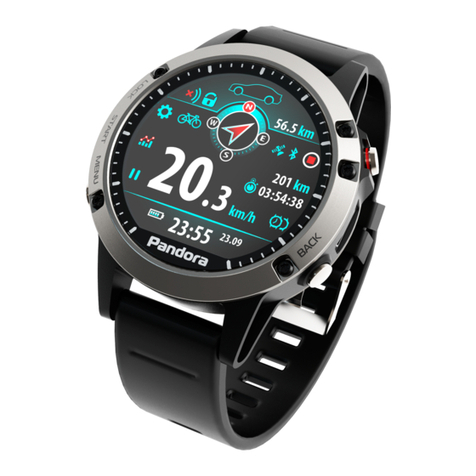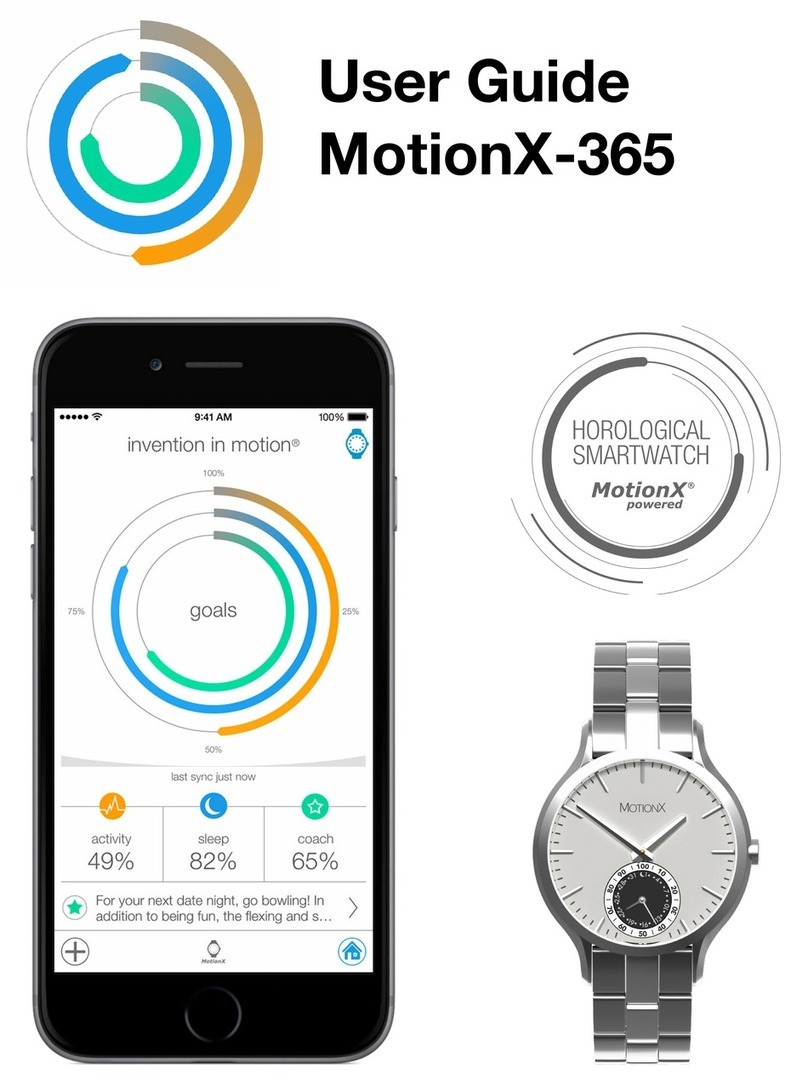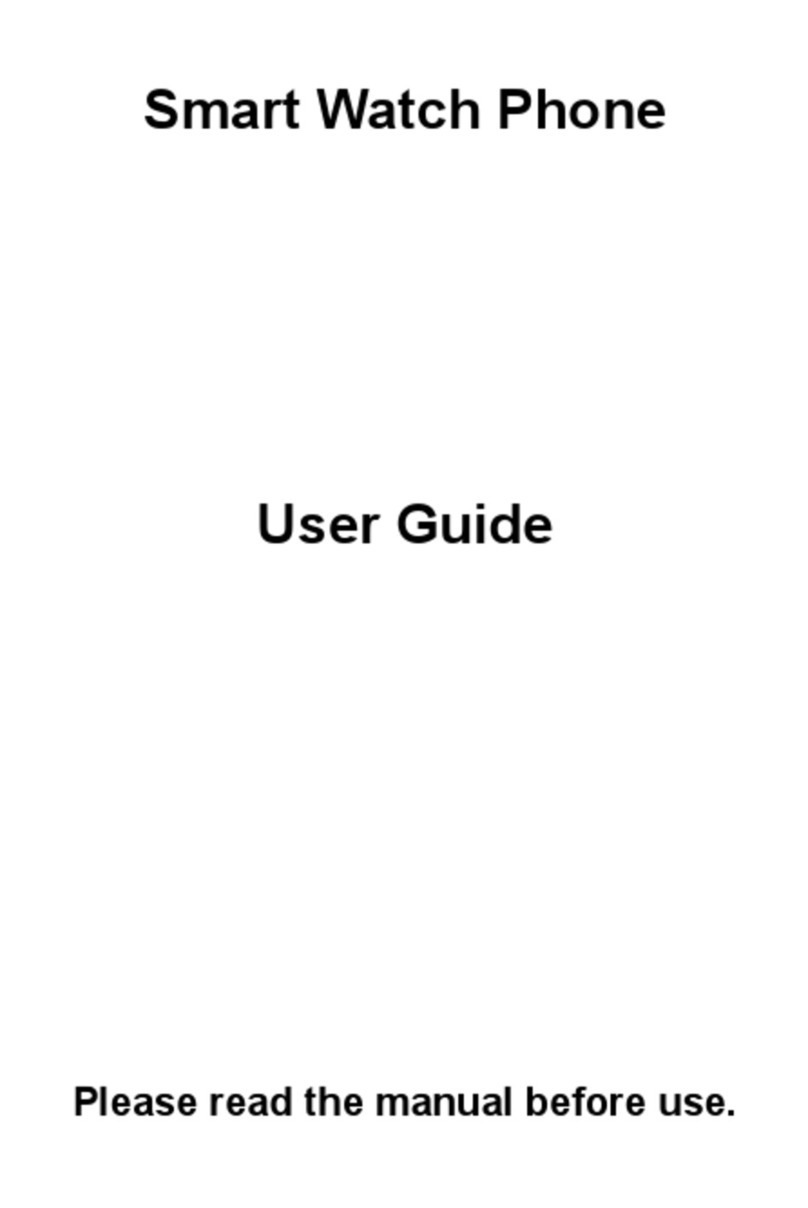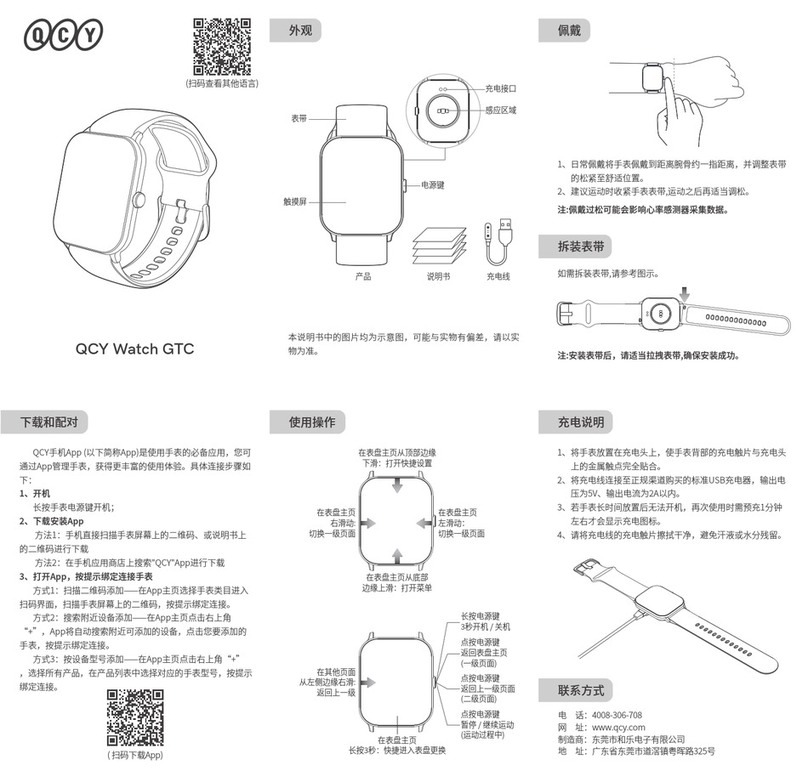
E-24
Digital Compass Readings
•After the first reading is obtained, the watch will continue to take digital compass readings automatically
for about one minute. After readings are complete, the watch will return to the mode you were in
immediately before entering the Digital Compass Mode.
•Pressing Cwhile a digital compass (direction reading) operation is in progress will restart a
one-minute digital compass operation.
•Auto light is disabled while a Digital Compass reading operation is in progress.
•The following table shows the meanings of each of the direction abbreviations that appear on the
display.
Direction Meaning Direction Meaning Direction Meaning Direction Meaning
NNorth NNE North-
northeast NE Northeast ENE East-
northeast
EEast ESE East-
southeast SE Southeast SSE South-
southeast
SSouth SSW South-
southwest SW Southwest WSW West-
southwest
WWest WNW West-
northwest NW Northwest NNW North-
northwest
•The margin of error for the angle value and the direction indicator is ±15 degrees while the watch is
horizontal (in relation to the horizon). If the indicated direction is northwest (NW) and 315 degrees, for
example, the actual direction can be anywhere from 300 to 330 degrees.
•Note that performing a digital compass operation while the watch is not horizontal (in relation to the
horizon) can result in large error.
•You can calibrate the bearing sensor if you suspect the direction reading is incorrect.
E-25
•Any ongoing digital compass operation is paused temporarily while the watch is performing an alert
operation (daily alarm, Hourly Time Signal, countdown timer alarm) or while illumination is turned on (by
pressing B). The digital compass operation resumes for its remaining duration after the operation that
caused it to pause is finished.
•See “Digital Compass Precautions” (page E-32) for important information about taking direction readings.
•The direction indicated by the Digital Compass is magnetic north.
You can use Magnetic Declination Correction to configure the watch to indicate true north, if you want.
For details, see “Magnetic Declination Correction” below, “To perform magnetic declination correction”
(page E-28), and “Magnetic North and True North” (page E-32).
Calibrating the Bearing Sensor
You should calibrate the bearing sensor whenever you feel that the direction readings being produced by
the watch are off. You can use any one of two different bearing sensor calibration methods: bidirectional
calibration or magnetic declination correction.
•Bidirectional Calibration
Bidirectional calibration calibrates the bearing sensor in relation to magnetic north. Use bidirectional
calibration when you want to take readings within an area exposed to magnetic force. This type of
calibration should be used if the watch becomes magnetized for any reason.
Important!
•To ensure correct direction readings by the digital compass, be sure to perform bidirectional calibration
before using it. The digital compass may produce incorrect direction readings if you do not perform
bidirectional calibration.
E-26
•Magnetic Declination Correction
With magnetic declination correction, you select a declination angle direction and input a magnetic
declination angle (difference between magnetic north and true north), which allows the watch to indicate
true north. You can perform this procedure when the magnetic declination angle is indicated on the map
you are using.
Precautions about bidirectional calibration
•You can use any two opposing directions for bidirectional calibration. You must, however, make sure
that they are 180 degrees opposite each other. Remember that if you perform the procedure
incorrectly, you will get wrong bearing sensor readings.
•Do not move the watch while calibration of either direction is in progress.
•You should perform bidirectional calibration in an environment that is the same as that where you plan
to be taking direction readings. If you plan to take direction readings in an open field, for example,
calibrate in an open field.
To perform bidirectional calibration
1. In the Digital Compass Mode, hold down A.
•The second hand will move to 12 o’clock, indicating the
bidirectional calibration mode.
•At this time, the display will show an upward pointing arrow ( )
and 1, indicating that the watch is ready for calibration of the first
direction.
E-27
2. Place the watch on a level surface facing any direction you want, and press C.
•This will start calibration of the first direction.
•-- is shown on the display while calibration is being performed.
•When calibration of the first direction is successful, OK appears on the display. After that, the
arrow changes to downward pointing ( ) and the display will show 2, indicating that the watch is
ready for calibration of the second direction.
Note
•Watch operations are disabled while the hour and minute hands are moving during a hand shift
operation.
3. Rotate the watch 180 degrees.
4. Press Cagain.
•This will start calibration of the second direction.
•-- is shown on the display while calibration is being performed.
•After calibration is successful, OK appears on the display and then the watch will start a digital
compass operation.
•ERR will appear on the display for a short while if an error occurs. After that, the screen will
automatically return to the first direction calibration screen (the one that appears after Ais held
down in step 1).
E-28
To perform magnetic declination correction
1. In the Digital Compass Mode, hold down A.
•The second hand will move to 12 o’clock, indicating the bidirectional calibration mode.
2. Press D.
•The watch will enter the magnetic declination correction mode.
•The display will show the magnetic declination direction (E, W) and angle.
Note
•Watch operations are disabled while the hour and minute hands are
moving during a hand shift operation.
Magnetic declination
direction (E, W) and angle
Magnetic declination
direction (E, W) and angle
E-29
3. Use Band Eto change the magnetic declination direction and angle setting as required.
North Setting Setting
Magnetic North 0° (OFF)
True North
E 90° to W 90°
E: East declination (Magnetic north is east of true north.)
W: West declination (Magnetic north is west of true north.)
•Note that you can input the declination angle in whole degree units only, so you may need to round
off the value specified on the map. If your map indicates the declination angle as 7.4°, you should
input 7°. In the case of 7.6° input 8°, for 7.5° you can input 7° or 8°.
•Holding down Bor Ewill scroll the setting at high speed.
•You can turn off (0° (OFF)) magnetic declination correction by pressing Band Eat the same
time.
•The illustration (page E-28) shows the value you should input and the direction setting you should
select when the map shows a magnetic declination of 7° West.
4. When the setting is the way you want, press Ato exit the setting screen.
E-30
Using Bearing Memory
You can save the bearing to a particular destination in bearing memory and use it to ensure you are
headed in the correct direction.
To store a direction angle reading in Bearing Memory
1. Point the 12 o’clock position of the watch in the direction of your reference bearing.
2. Press Cto start a digital compass operation (page E-22).
3. During the one minute that digital compass readings are being taken, press Eto store the current
reading in Bearing Memory.
•The saved direction angle value will flash on the display, and then
a one-minute digital compass operation will start.
•The Dial Hand 2 (at 6 o’clock) indicates the currently saved
bearing (Bearing Memory).
•To reset the recorded bearing angle to north (0 degrees), hold
down Efor about two seconds. This will also trigger a one-minute
digital compass operation.
Note
•If you navigate to another mode, the Dial Hand 2 (at 6 o’clock) will
indicate tide conditions (Tide Graph). When you return to the Digital
Compass Mode, it will indicate the last recorded bearing.
Indicates the currently saved
bearing (Bearing Memory).
North pointer
Bearing memory
direction angle value
Indicates the currently saved
bearing (Bearing Memory).
North pointer
Bearing memory
direction angle value
E-31
Example: Advancing to an objective while monitoring your bearing
Even if you lose sight of your objective, you can use a map to store the required bearing in bearing
memory and refer to the memorized information to advance to your objective.
1. Set the map.
•For information about how to set a map, see “Positioning a map in accordance with actual
surroundings (setting a map)” below.
2. Place the watch on the map at your current location, and point 12 o’clock at your desired objective on
the map.
3. Press Eto store the direction to your objective in bearing memory. Now you can advance towards
your objective while observing the stored direction on the watch display.
Important!
•As you progress, the direction to your bearing will change, so you need to keep updating the
information in bearing memory.
Positioning a map in accordance with actual surroundings (setting a map)
You can align a map with the northerly direction indicated by the watch, and then compare what is shown
on the map with your actual surroundings. This is helpful for checking your current location and the
location of your objective. This process is called “setting a map”.
•When setting a map, be sure to align the watch with true north. See “Magnetic North and True North”
(page E-32) and “Magnetic Declination Correction” (page E-26).
Operation Guide 5442 5443

